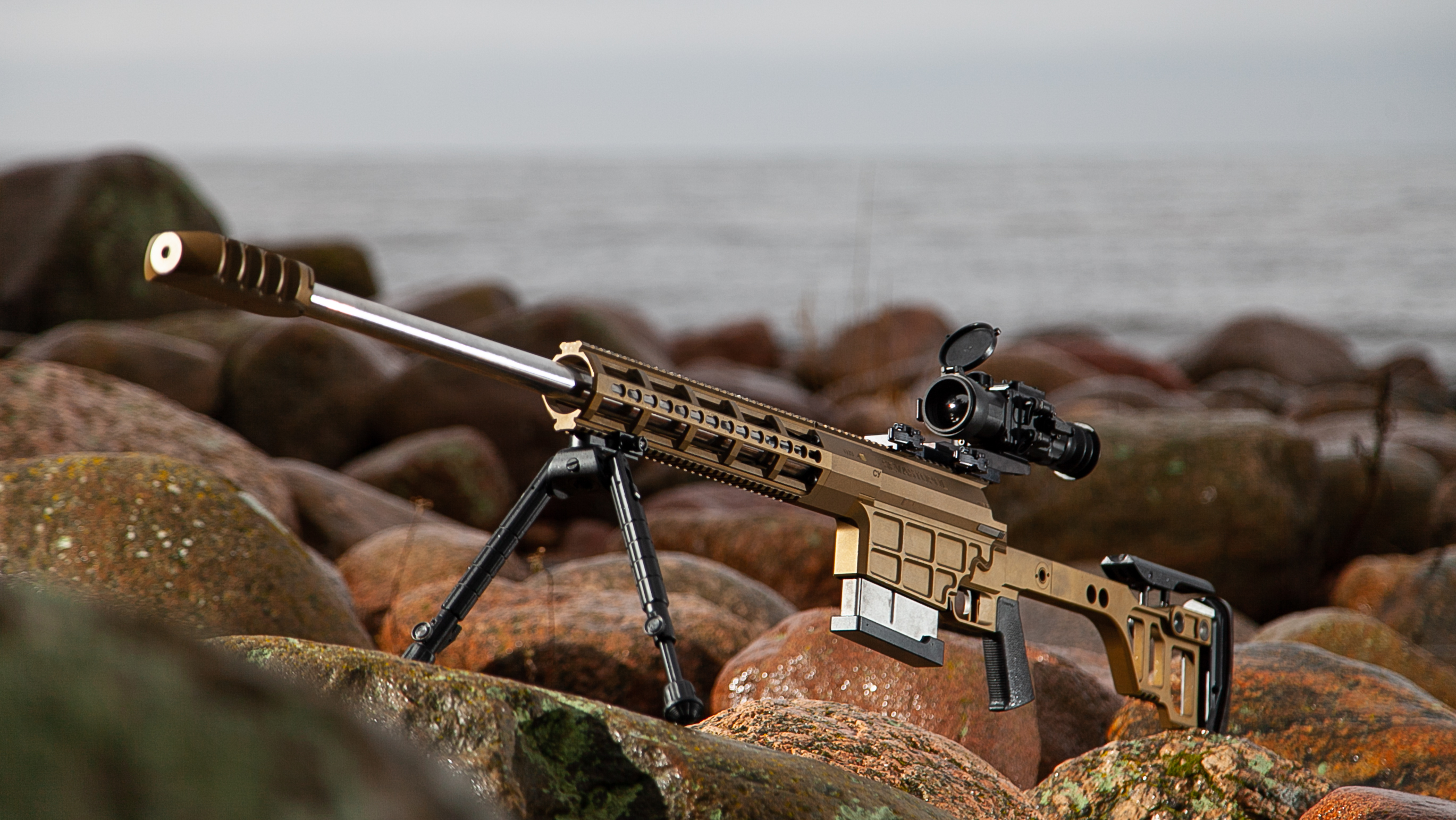Although Russia’s Kinzhal hypersonic missiles have managed to hog the limelight in the ongoing Ukraine war, the country has already started testing a hypersonic sniper cartridge produced by Russia’s first private arms manufacturer, Lobaev Arms developer.
1st Time Ever, Ukraine’s Cruise Missile Punctures A Submarine; Images Show ‘Irreparable Damage’ To Russia Vessel
This was revealed by the head of Lobaev Arms developer, Vladislav Lobaev, to Russian state news agency RIA Novosti.
“Lobaev Arms has resumed development and has already begun testing a conditionally hypersonic cartridge. The company is conducting projectile speed and accuracy tests,” Lobaev told the news agency.
The report noted that since the cartridge now flies “on the verge” of hypersonic speed, it is still considered “conditionally hypersonic.” Hypersonic speed refers to five times the speed of sound. Russia already has fully functional hypersonic missiles but has yet to field a bullet that fires at hypersonic speeds.
“We can produce it in a borderline hypersonic version or go hypersonic. We will make this decision based on the test results once the mass of the serial product is determined. Hypersonic starts at a speed of over 1500 meters per second (above five Mach numbers), with a high-speed sniper cartridge flying at a speed of 900 meters per second is considered,” the manufacturer noted.
Lobaev stressed that the company had previously put the development of hypersonic cartridges on hold because of the need to boost the production of existing weapons following state defense directives given by the Kremlin.
However, he noted that the work on the project has resumed since the Armed Forces of Ukraine have started actively using brand-new 10x100mm caliber cartridges in combat developed by Blackwater Ammunition. These projectiles reportedly have a very long range, high potential, and high precision.
The manufacturer further explained that the Ukrainian forces reportedly use this caliber at ranges outside the range of the Cheytac caliber rifles (10.3×77 millimeters. – Ed.) at a distance of 2.4-2.6 kilometers. This would explain why the testing and production of hypersonic cartridges have been resumed once again.

The danger posed by these cartridges now deployed by Ukraine’s forces is that they penetrate any personnel armor protection at a range of 1.7-1.8 kilometers, even though it is not even armor-piercing bullet. EurAsian Times could not independently verify this information.
Hypersonic rounds would have the potential to improve performance in several ways. Considering all other things being equal, their radically increased travel speeds would make it simpler for snipers to set up their shots by reducing the influence of other elements. Additionally, the target would have less time with hypersonic rounds to maneuver out of the projectile’s course.
Moreover, most firearms have muzzle velocities below 1,200 meters/second or three times the speed of sound, and in these circumstances, a bullet penetrates skin and flesh like a solid object. However, a bullet’s temperature can almost reach the melting point at hypersonic speeds, causing it to melt and vaporize at impact. The projectile could likely tear into steel armor with an effect like that.
Meanwhile, Russia’s iconic and renowned Kinzhal hypersonic missiles are now in the limelight again as the country has pledged to dramatically ramp up production of this missile, which has been credited with some high-value kills.
Russia Is Ramping Up Arms Production
On the occasion of Russia’s gunsmiths’ day on September 19, Russia’s state arms defense conglomerate Rostec, which controls much of the weapons industry, noted that its defense enterprises were significantly hiking the production of an array of missiles including the Kinzhal, also popularly known as Dagger, RIA Novosti reported.
Bekhan Ozdoev, the industrial director of the complex of conventional weapons, ammunition, and special chemicals of Rostec, made the announcement.
The announcement comes months after Russian President Vladimir Putin said in a video address published on the Kremlin website in February that Russia will continue the mass production of Kinzhal air-based hypersonic missiles. “We will continue the serial production of Kinzhal air-based hypersonic systems.”
The Kinzhal is a cutting-edge aerial system featuring hypersonic aero-ballistic missiles developed by Russia, which has been used to fire on Ukrainian targets on multiple occasions in the ongoing conflict. Earlier this year, Ukraine claimed that a Patriot missile defense system had intercepted the Kinzhal missile, a charge refuted by Moscow.

Although Russian Aerospace Forces (VKS) had traditionally chosen the MiG-31K and MiG-31I fighter interceptors to carry the Kinzhal hypersonic missiles, it has reportedly test-fired the rocket from the Su-34 Fullback bomber. The missile, as previously reported by EurAsian Times, was fired on a target inside Ukraine.
This development has given the impression that there would now be an uptick in the use of Kinzhal missiles in Ukraine. Russia has positioned these hypersonic missiles as ones that do not have any alternatives in the world.
Besides the Kinzhal, Rostec is set to increase the production of several other ammunition, including missiles for the Iskander operational-tactical missile system, for the Pantsir air defense system, as well as the production of air bombs, tank and artillery shells, armored vehicles, flamethrower systems, and MLRS.
Russia has ramped up the production of some military hardware by more than tenfold to supply its army in Ukraine. And for some types of hardware, output had been boosted “by tens of times,” said Ozdoev. “We are going forward at cruising speed, smoke from all the pipes,” he said.
However, he stopped short of detailing the volumes of these weapons that are seeing an uptick in production.
- Contact the author at sakshi.tiwari9555 (at) gmail.com
- Follow EurAsian Times on Google News




